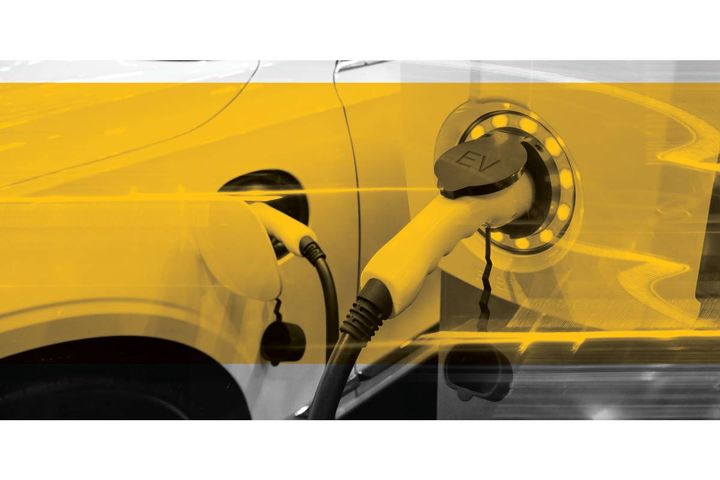Image: CF.com
An electric vehicle industry executive recently told me it would have made more sense to launch EVs in the commercial fleet sector a decade ago instead of among retail consumers.
Consumers are an individual-oriented driving segment, each with their own traveling preferences and habits. They can be both picky and very practical. Think of random kinetic atoms on the road. While Tesla is seeing strong sales among wealthier drivers along both U.S. coasts and a spike in stock market valuations, mass adoption of EVs by the wider American driving public is still many years off. Education and plentiful charging access still must be advanced.
Fleets on the other hand can embrace EVs, now. Fleets thrive on routes, schedules, specific tasks, and close tracking. The patterns are predictable and managed. With limited charging stations and mileage ranges, EVs could have been developed more efficiently with more data during the last 10 years in fleets.
Fortunately, it’s not too late. The potential for fleet electrification is bigger than ever. With the explosive growth in last-mile deliveries amid a global pandemic, corporations, delivery and logistics services, governments, public sector agencies and smaller businesses are gravitating toward EVs. Only a fraction of the fleet market for EVs has been realized. As the efficiencies and savings become more apparent to early adopters, the market for EVs can only grow.
Therein lies the purpose of ChargedFleet.com (CF.com), a virtual content gallery and open marketplace for the robust fleet slice of the electric vehicle pie. Here you will find the latest information and insight from an array of Bobit Business Media fleet website and magazine brands: Fleet Forward, Automotive Fleet, Work Truck, Heavy Duty Trucking, Government Fleet, Business Fleet, and Auto Rental News, as well as original content from CF.com.
CF.com was born on Jan. 4, 2021, the start of a latter-pandemic period teeming with hope and healing across all business sectors. Here is just a snapshot of positive trends that speak to the mission of CF.com:
- The number of available electric vehicle models is expected to more than triple in the next three years, from about 40 to 127 in the U.S., as battery prices fall, charging infrastructure spreads and adoption rises, says Dan Bowermaster, senior program manager for electric transportation at the Electric Power Research Institute (EPRI), quoted in utilitydrive.com.
- The EV market in the U.S. is estimated to grow five-fold, reaching almost 7 million unit sales by 2025 from 1.4 million in 2020, according to Frost & Sullivan’s recent analysis, Transitory Trends in the Electric Vehicle Ecosystem in the United States 2025. “Fully Hybrid Electric Vehicles (FHEVs): FHEVs are expected to remain the most popular HEV model. They accounted for 41.7% of all EV sales in 2020 and are expected to climb to 44.6% by 2025, boosted by changes in the charging infrastructure and state incentives.”
- Plug-in vehicles comprised about 2% of global vehicle sales in 2019, according to CleanTechnica.com. “If they double their market share every two years, that’s 16% market share in 2025, and 64% in 2029. Even if the growth is half that fast, plug-in vehicles will become 32% of new vehicle sales within the decade.”
- The price of lithium-ion batteries, which power most mainstream EVs, has been dropping sharply in the last few years, according to GreenBiz.com. “Bloomberg New Energy Finance (BNEF) says that between 2010 and 2019, lithium-ion battery pack prices fell 87%. In 2019, they dropped 13% more. At that rate, electric vehicles will begin to cost the same as their fossil fuel counterparts between 2025 and 2029, depending on the vehicle type; just in time for these targets. Starting in 2030, BNEF predicts 26 million EVs will be sold annually, representing 28% of the world’s new cars sold.”
- Meanwhile, Toyota Motor Corp. is making headway with its research and development of solid-state battery prototype, which could be ready for wide production by 2025, Motor Trend reports. S.S. batteries are cheaper and more energized than lithium-ion and could ultimately tilt the cost balance in favor of electric vehicles.
- Manufacturers are making serious forays into the heavy-duty trucking industry, which would redefine the core stalwart of America’s transportation logistics sector. If you can electrify a semi, anything is possible.
Just like the coming advances with electric vehicles, ChargedFleet.com will keep evolving into content niches and segments that provide fleet professionals with timely and useable information.
A century ago, America emerged from a deadly global pandemic and roared into the 20s, fueled in part by the mass production and purchase of affordable first-generation motorcars.
History may not exactly repeat, but it sure can imitate. Look for electric vehicles to help define another pivotal 20s decade, not with a roar, but a smooth, clean swoosh.
Author
Martin Romjue
Editor
CUT COTS OF THE FLEET WITH OUR AUDIT PROGRAM
The audit is a key tool to know the overall status and provide the analysis, the assessment, the advice, the suggestions and the actions to take in order to cut costs and increase the efficiency and efficacy of the fleet. We propose the following fleet management audit.





